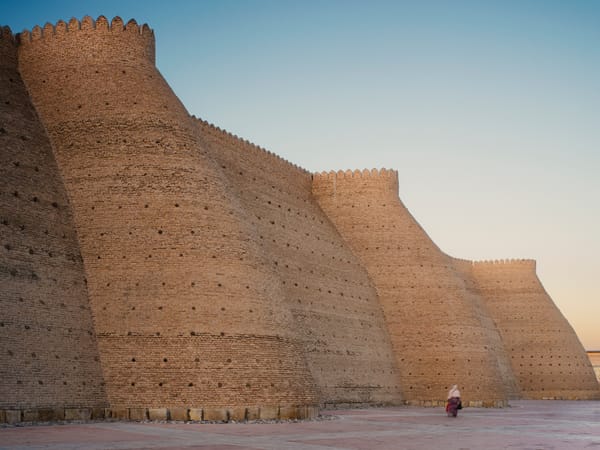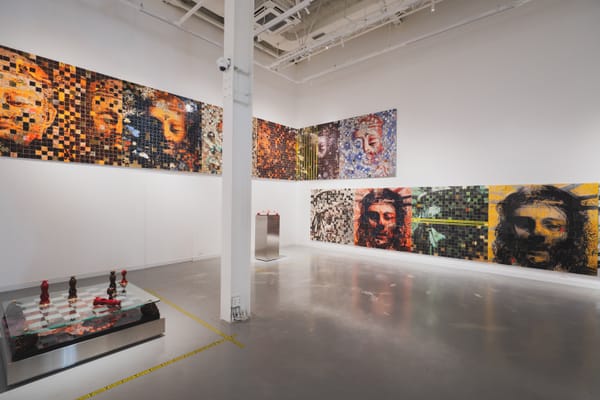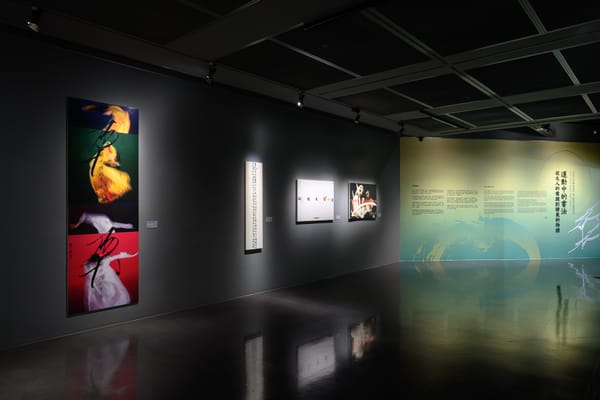Shows
“Three Doors” at Frankfurter Kunstverein


A Black man burned to death in a jail cell. Emergency calls to the police during a mass killing spree unanswered. Members of security services revealed as participants in far-right extremist groups. What can citizens do when the state refuses to admit its wrongdoing, failures, and complicity with acts of racist violence and terrorism?
Prompted by the advocacy of two civil-society groups—the Initiative 19. Februar Hanau and Initiative in Gedenken an Oury Jalloh—to utilize its resources on behalf of victims’ families, friends, and their communities to seek justice, the Frankfurter Kunstverein launched a collaboration with the London-based collective Forensic Architecture (FA) and its Berlin-affiliated agency Forensis, ambitiously re-envisioning the capacities of a cultural institution. Together, these actors produced a harrowing exhibition, titled “Three Doors,” that synthetized tactics of forensic analysis and activist campaigns in order to portray the German state’s continued failings to protect members of society from right-wing extremism.

The incident central to “Three Doors” was one of the most notorious in recent German history. On the night of February 19, 2020, in the city of Hanau, 25 kilometers east of Frankfurt, a gunman went on a killing spree in two shisha bars that left nine people dead and five more seriously wounded—all of whom had ethnic backgrounds from either southeastern Europe, west Asia, or central Africa. The 43-year-old perpetrator, a known right-wing extremist who wrote online that he wanted to “annihilate” people from these regions, then returned home, killed his mother, and took his own life. Five hours passed before the police raided the perpetrator’s house where they knew he was hiding. The gunman’s father, who encouraged his son’s neo-Nazi beliefs, was cleared of complicity by claiming to have slept through his son’s actions—including the murder-suicide downstairs in his own house—despite computer records showing that he was active online that night. Ultimately, prosecutors decided no one would be held culpable for the deaths and injuries.


In the galleries of the Frankfurter Kunstverein, FA/Forensis show that in reality the actions of the security forces were responsible for many of the excessive deaths that evening. They created a massive timeline of the events, along with two animated videos reconstructing two key incidents. The first investigation is focused on the locked emergency exit at the Arena Bar, illustrating how it prevented people from escaping. FA calculated using a computer simulation that had the door been open, several lives could have been saved. (Regulars at the bar knew the door was locked to prevent people from evading raids by the police.) In the second investigation, FA/Forensis followed the police’s actions that night, illustrating with real-time footage and computer modeling how multiple calls to the emergency number went unanswered; how they left the gunman’s doors unmonitored for hours and failed to give the police helicopter his address, potentially giving him avenues to escape. They also worked with acoustic engineers to evaluate whether the father inside the house and police outside would have heard the gunshots. FA/Forensis’s conclusions undermine many of the claims in the official reports and reveal how, in their view, the police “completely mishandled the operation.” For FA/Forensis, their findings represent the “over-policing and under-protection experienced by racialised communities in Germany, as well as systemic state failures and complacency concerning perpetrators of racist violence.”
Along with FA/Forensis’s complex constructed narratives—which are highly detailed and clinical in their methodology and delivery—the exhibition also gave space for the victim’s family members and friends of Initiative 19. Februar Hanau to share their pain, anger, and agony over the murders and the subsequent handling by the police and justice system. These testimonials were recorded on video and screened on individual monitors in a separate gallery space, allowing the speakers’ experiences to be heard publicly, as they question, for instance, the need for prolonged, invasive autopsies that disfigured the bodies of the victims or prevented their timely burial according to religious customs; and the many unanswered questions from that night. A separate timeline documented two years of their collective actions to assert their demands in the legal, social, and political realms.

The third door of the exhibition’s title was that of a jail cell, where Oury Jalloh, an asylum seeker from Sierra Leone was taken into policy custody in the city of Dessau and beaten, tied down, and then burned to death on January 7, 2005—an act that the state still maintains was self-inflicted despite its practical impossibility. To dispute the state’s claims, FA/Forensis worked with experts to analyze the smoke stains around the cell door. A full-scale version of the doorway, recreated from photographic evidence and annotated with expert remarks, was placed in the gallery, along with a video that recounts local groups’ long struggles in the legal system to have the incident properly investigated.
The exhibition presented a strong counter-narrative to the official line and illustrated how the legal system itself is complicit in the covering up of Jalloh’s death. The staging of the recreated cell walls and door as evidence that we as the viewers can also view, in concert with the information from the video, follows FA’s broad understanding of aesthetic practice as “the heightening of our capacity for sensing, for tuning in, and noticing . . . it is also our ability to weave together a wide multiplicity of sensoria of different kinds.”
Beyond the horrendous events and suffering portrayed in “Three Doors,” what was striking about the exhibition was that it existed at all. Bringing Forensic Architecture’s practice in association with the activist groups follows Frankfurter Kunstverein’s historical mandate as “a place of critical reflection on the present moment, on the here and now in society, and on the human condition,” wrote director Franziska Nori. In this conception of what a public-oriented institution can do for the public, aesthetics is understood as “the power of sensory experience in space” that can make perceptible information and knowledge that is otherwise fragmented. Forensic Architecture, Nori says, “enables the emergence of altered perspectives by which we can interpret the world . . . That is why their work is presented in both exhibition halls and courts of law.” It also transformed the Frankfurter Kunstverein into a site of memorial and occupation in the city’s center to protest not only right-wing extremism and racist disinformation campaigns but the governments that can’t or won’t protect all people.
“Three Doors” was on view at the Frankfurter Kunstverein from June 3 to September 11, 2022.
HG Masters is ArtAsiaPacific’s deputy editor and deputy publisher.







